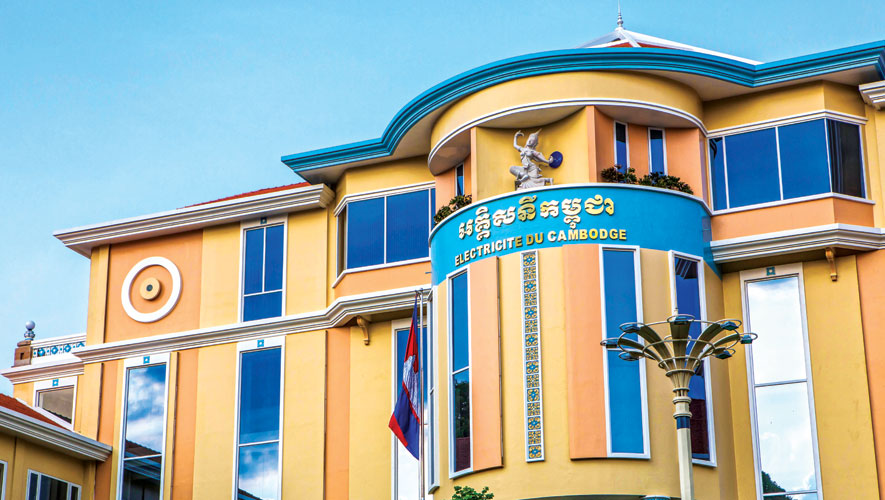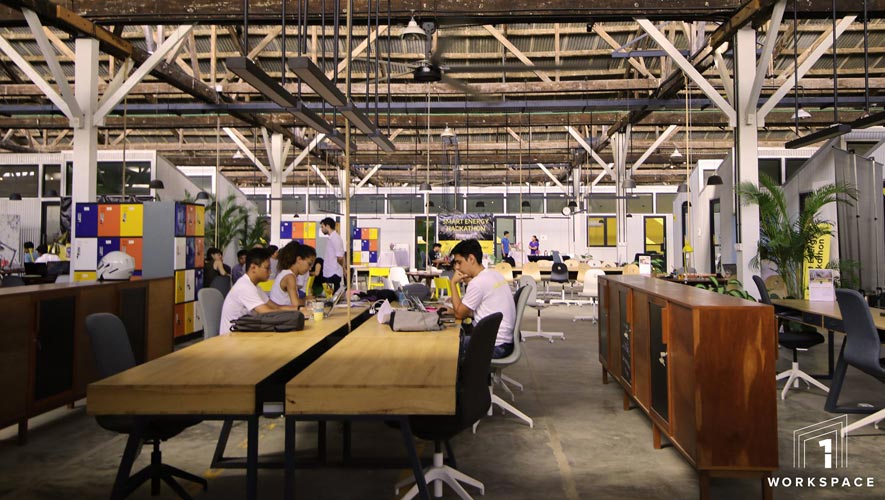Cambodia is looking to increase power from solar photovoltaic installation with cumulative capacity at 410 megawatts (MW) in the years to come as the country plans to diversify power sources, focusing on green energy.
For the latest Cambodian Business news, visit Khmer Times Business
According to a United Nations Development Programme report in conjunction with various Cambodian ministries, one 10 MW solar battery can serve 49,000 homes and 231,000 people on average a year in Cambodia.
The country supplied only 10 MW from solar power in 2018 and now the cumulative capacity is 90 MW. The government says it aims to increase green energy in the national grid.
Figures from Ministry of Mines and Energy shows that seven other solar PV projects have been approved and by 2022, the cumulative capacity will reach 410 MW in comparison with the predicted 2019 power consumption of 2,650 MW.
Meeting energy demand
Solar PV projects have been approved as the government tries to meet energy demand for citizens and new developments, said Victor Jona, director general of the ministry’s Energy. He said installing solar is fast and it can be a quick fix during the dry season when lower water levels hydropower dams.
The seven solar projects with a combined capacity of 320 MW are under construction and approved across Kampong Chhnang, Battambang, Svay Rieng, Pursat, and Banteay Meanchey provinces.
“This is a good opportunity because the renewable energy is a locally produced power and it does not directly spread emissions into the air which is in line with what we want from green energy,” Jona said.
So far, in order to encourage investment in the renewable energy sector, the government does not tax it for nine years, and during the construction period, the government does not impose tariffs on importing materials, he added.
Good investment
Jona said it was a good investment incentive.
During the dry season, solar reigns supreme. Cambodia has almost six peak sunlight hours a day, placing it among the world’s top solar resources, according to the ministry.
Enough sunlight
“It is a positive step in increasing the power available from renewable energy. Cambodia has enough potential sunshine and thanks to political stability, investors are confident and trust injecting money into Cambodia,” Jona said.
Solar power cheap
Mr Jona said Cambodia has not set a target for solar power’s percentage contribution to the grid but, currently, power it is more than 10 percent of total power.
Keo Ratanak, director-general of Electricite du Cambodge (EDC), echoed that same sentiment, saying the government is now focusing on solar power because it is cheap to produce in Cambodia and has minimal impact on the environment.
“We are prioritising solar power because it is good for the environment. We want to integrate green energies into the country’s economic development strategy,” Mr Ratanak said. “The aim is also to diversify. Relying on just one energy source is problematic.”
Strong arguments
Currently, Electricite Du Cambodge purchases power from solar PV at $0.076 per Kilowat. But the auction for ADB-backed 60 megawatts of solar power in Cambodia has led to the lowest power price ever recorded in Southeast Asia, according to various publications dealing with the global energy sector.
The arguments for solar power as a solution to Cambodia’s energy woes are strong.
The Asian Development Bank office of public-private partnerships Director Siddharta Shah said that the tender’s success showed the sheer power of competition.
“This is a new era for renewable energy development in Cambodia and the region and particularly for solar power generation,” he said in press release on September.
“This is good news for EDC and the people of Cambodia. We believe more governments in the region will adopt auctions as a strategy to procure renewable energy generation capacity and this structure and tariff will serve as a benchmark for future projects.”
Sokun Sum, chairman of Solar Energy Association of Cambodia, shared attribution on solar development that solar PV installation helps Cambodia fill the shortage gap currently.
“The government has paid much attention on the green energy when in previous times we have depended on hydro. Focusing on solar is the better way to fill the power shortage gap. Hydro takes a long time which affects real demand for power currently and the investment amount is high.”
In the short term, less than 100 MW of solar PV installation can be built in a one year period and in the long term, solar can be complementary to hydro. Cambodia has the potential of sunshine for solar and in the rainy season for hydro, Mr Sokun said.
In January 2018, the Electricity Authority of Cambodia (EAC) enacted a set of regulations allowing consumers to install their own solar power systems. Medium- and high-voltage consumers will be able to install systems while still being connected to the national grid – provided that they generate less than 50 percent of the capacity they have agreed to buy from the national provider.
Coca Cola factory in Phnom Penh Special Economic Zone and Chip Mong Insee Cement factory in Kampot province are leaders equipping the rooftop solar PV systems and floating solar systems for their own usage and for the national grid.
However, According to Mr Jona, the ministry is working to enact a new regulation to enable residential buildings, apartments, and condos to equip themselves with solar photovoltaics.
“Regulations related to enterprises [factories], we have, but regulation for residential building and apartments, we have not yet had. The Electricity Authority of Cambodia and General Directorate of Energy [of Ministry of Mines and Energy] will work together on technical regulations,” Mr Jona said.
Cambodia imported 442MW of electricity from Thailand, Vietnam, and Laos last year. The rest was produced in Cambodia from coal-fired plants, hydropower dams and solar farms.
Last year, Cambodia consumed 2,650MW of electricity, a 15 per cent increase compared with 2017. The power sources are mainly from dams, coal-fired power plants, solar, and imports.
The annual growth of power usage is between 16 percent and 18 percent, according to the ministry.
To fully move to green energy, the government is now expanding its focus to energy. Singapore-based The Blue Circle renewable independent power producer is working to produce 80 MW of wind energy in Kampot province, which, if completed, will be the first wind turbine in the country.
Studies of potential
“As in a bid to increase our sources of power we now focus much on green energy. Cambodia wants more energy investment. Investors can come and conduct economic studies of our potential. We will support them,” Mr Jona said.




